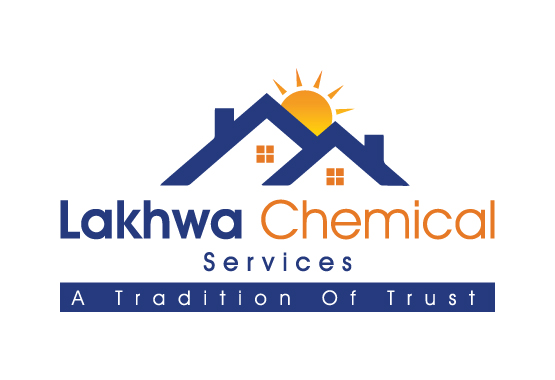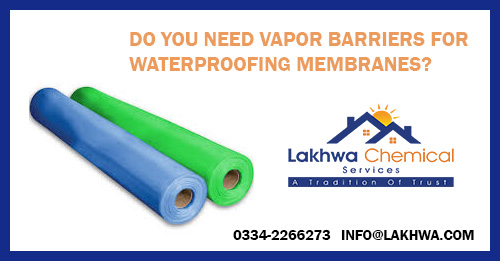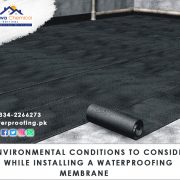Do you Need Vapor Barriers for Waterproofing Membranes?
Waterproofing is an important component in the construction industry, helping customers in protecting their structures. Whether you’re working on a new construction project or renovating an existing structure, it’s crucial to understand the role of vapor barriers and waterproofing membranes.
Waterproofing Membrane: The First Line of Defense
Waterproofing membranes are the primary line of defense against water infiltration. They are designed to create a watertight barrier that prevents liquid water, such as rain and groundwater, from entering structures. Waterproofing membranes are applied to different areas, including foundations, roofs, walls, and below-grade structures.
These membranes come in various forms, such as asphalt, rubberized asphalt, polyethylene, or liquid-applied coatings. The choice of waterproofing membrane depends on the specific requirements of the project and the conditions it will be exposed to.
Read More
Which is the Best Waterproofing Material for Interior Walls?
What are the Properties of Waterproofing?
What are the Basic Principles of Waterproofing?
The Role of Vapor Barriers
Vapor barriers serve a different purpose. While waterproofing membranes are designed to prevent liquid water from entering, vapor barriers are intended to control the passage of water vapor through a building’s envelope. Water vapor can enter the building through diffusion, leakage, and temperature-driven mechanism. And, if not controlled, can lead to a host of issues, including condensation, mold growth, and reduced air quality.
Vapor barriers are made from materials like polyethylene or foil-faced insulation. Moreover, they are installed on the warmer side of the building.
So, Do You Need Both?
The need for both a vapor barrier and a waterproofing membrane depends on specific requirements and the environment. Let’s discuss…
Climate and Building Use
In cold climates, the risk of condensation is higher, which impels owners to use vapor barriers. In contrast, in a hot and humid climate, a waterproofing membrane may take precedence.
Building Envelope
If your building has an airtight and well-insulated envelope, it is better to purchase a vapor barrier to control moisture. However, if the envelope is not airtight, moisture will enter the structure and cause problems. The best solution, however, is to use a combination of the two (vapor barrier and waterproofing membrane).
Read More
What Causes Waterproofing to Fail?
Can You Waterproof Over Existing Waterproofing?
Types of Waterproofing in GI Corrugated Sheet
Local Building Codes & Regulations
To apply vapor barriers and membranes, local building codes and regulations are necessary. Compliance with these codes is crucial to ensure the safety and longevity of the building.
Specific Project Requirements
Certain projects involving below-grade structures like basements demand a tough covering (waterproofing membrane) to withstand hydrostatic pressure. However, adding a vapor barrier may be necessary to maintain proper indoor air quality.
The Benefits of a Dual Approach
When used in conjunction, waterproofing membranes and vapor barriers offer several key benefits:
Proper Moisture Control
The dual approach provides a holistic solution for moisture control, addressing both liquid water and water vapor.
Long-Term Durability
By preventing moisture-related issues, you can extend the lifespan of your building and reduce maintenance and repair costs.
Better Air Quality
Properly installed vapor barriers help maintain a healthy indoor environment by preventing mold growth and ensuring consistent temperature and humidity levels.
Compliance & Safety
Adhering to local building codes and regulations ensures that your project meets safety standards and reduces potential liabilities.
Conclusion
Dual protection (vapor barrier and waterproofing membrane) depends on the specific requirements of the project, including climate, building envelope, local codes, and more. While there are instances where one or the other takes precedence, in many cases, using both a vapor barrier and a waterproofing membrane is a prudent choice to ensure comprehensive moisture control and the long-term durability of your building. Consulting with a qualified architect or engineer who is knowledgeable about local conditions and building codes is a wise step in making this decision and ensuring the success of your construction or renovation project.
Connect with Lakhwa Chemical Services for a safe and secure project!





Leave a Reply
Want to join the discussion?Feel free to contribute!